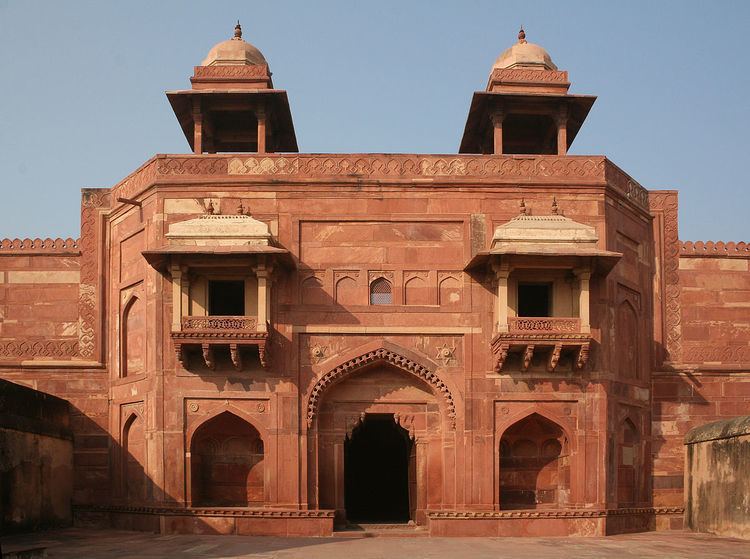 | ||
The Mughal Harem (Urdu: مغل حرم) was the harem of Mughal emperors of South Asia. The term originated with the Near East, meaning a "forbidden place; sacrosanct, sanctum", and etymologically related to the Arabic حريم ḥarīm, "a sacred inviolable place; female members of the family" and حرام ḥarām, "forbidden; sacred". It came to mean the sphere of women in what is usually a polygynous household and their segregated quarters which are forbidden to men. Harems were composed of wives, female relatives, concubines, and male infants.
The harem was not just a place where women lived. Babies were born and children grew up there. Within the precincts of the harem were markets, bazaars, laundries, kitchens, playgrounds, schools and baths. The harem had a hierarchy, its chief authorities being the wives and female relatives of the emperor and below them were the concubines. Mothers, step-mothers, aunts, grandmothers, step-sisters, sisters, daughters and other female relatives that lived in the harem. There were also ladies-in-waiting, servants, maids, cooks, women official and guards.
The harem of the Mughal Empire was guarded by Eunuchs, as well as female warriors called Urdubegis.
With the construction of Fatehpur Sikri, Emperor Akbar saw need to organize the administration of his Zenana. This portion of the palace was reputably home to more than five thousand women. While Abu'l-Fazl ibn Mubarak claims in the Akbarnama that each woman had her own suite of rooms, it is more likely that only members of the royal family and favorites of the emperor had their own apartments. The zenana was divided into sections, with (female) daroghas tending to the organizational needs of the residents, and working to keep the peace. Other administrative positions within the zenana included the tehwildars, or accounts officers responsible for the salaries and financial requests of the zenana inhabitants. The Mahaldar, the female servant of highest authority, often acted as an intelligence source from the zenana directly to the emperor. The anagas, or royal wet-nurses, were elevated to positions of rank though their purpose was not strictly administrative.
